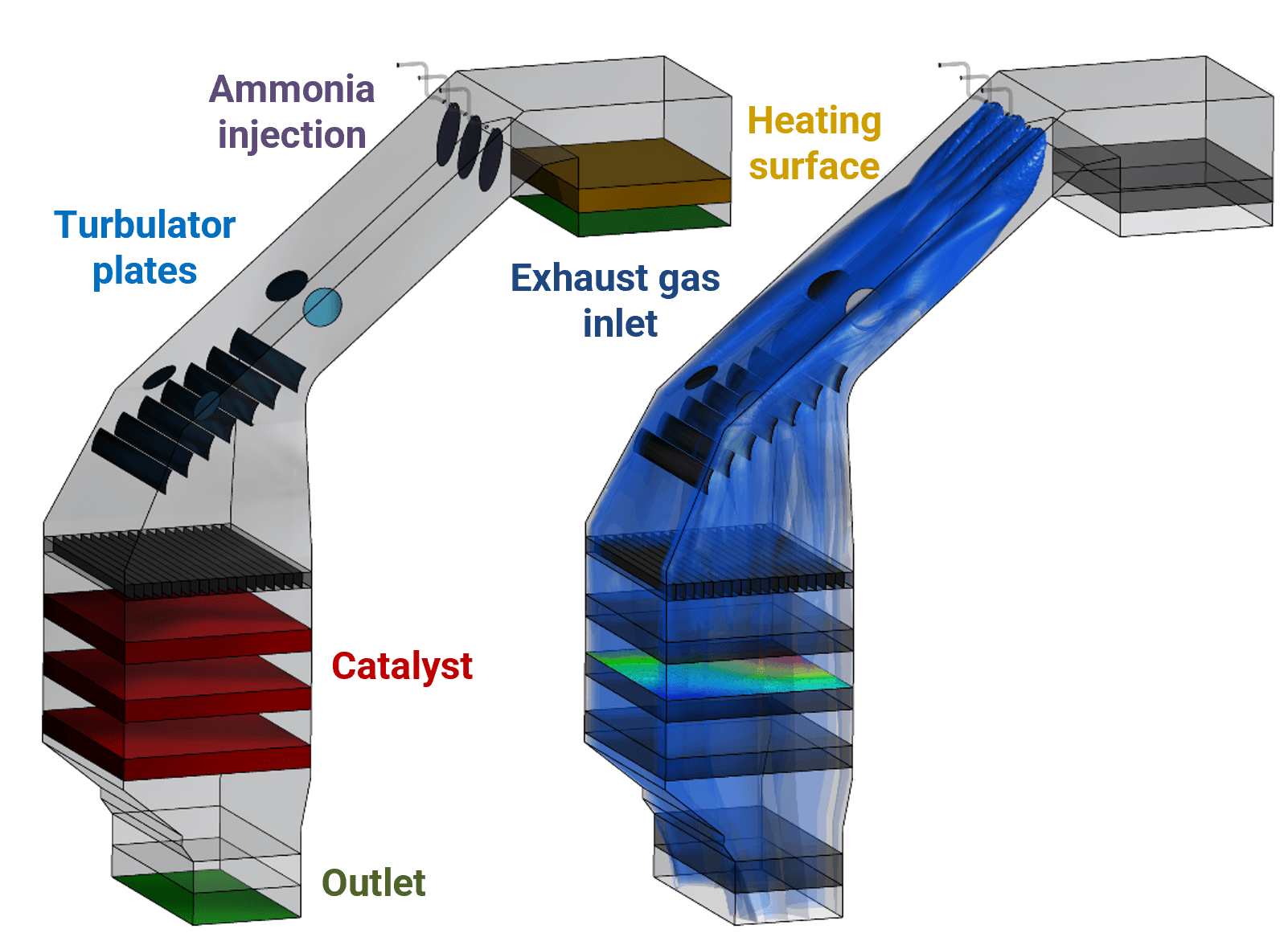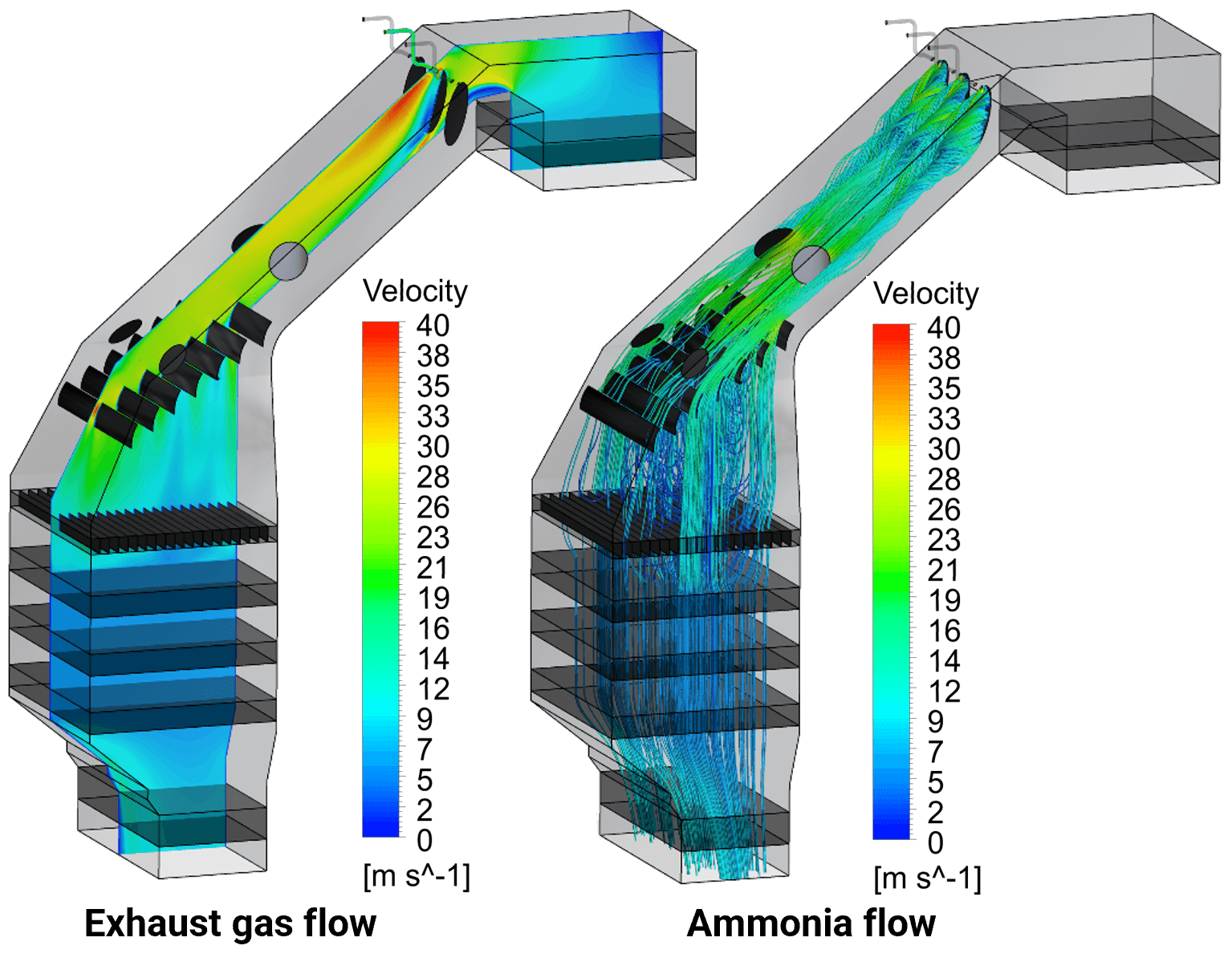NOx are nitrogen oxides that form under high temperature conditions, such as during combustion of fuels. NOx is documented to have severe negative impacts on both the environment and human health. Furthermore, NOx emissions are shown be both a strong direct and indirect contributor to global warming. For this reason, it is commonplace to install NOx reduction and control implements, such as SCR’s (Selective Catalytic Reduction) in boilers.
SCR’s reduce NOx emissions by introducing urea or ammonia after the combustion process, in order to convert the nitrogen oxides into nitrogen and water. The ammonia is first injected into the system upstream the catalyst and mixed into the exhaust gas stream. The mixture is then guided through a catalyst which increases the chemical reaction rate. This process significantly reduces the amount of NOx in the exhaust gas.
In order to optimize the process, it is a key factor that the ammonia and exhaust gas are thoroughly mixed before reaching the catalyst. And that there is a uniform flow distribution across the catalyst. A thorough mixing ensures that an appropriate amount of ammonia is present at all sections of the catalyst. And an even flow distribution ensures that the retention time inside the catalyst is even for all of the exhaust gas flow. If either of the two aforementioned conditions are not met, it can result in ammonia slip, where some of the ammonia passes through the system unreacted and is instead ejected into the environment along with the inefficiently treated exhaust gas. Like NOx, ammonia has a negative environmental effect, which can also indirectly lead to global warming.
For the above reason, ensuring a proper mixing of injected ammonia into the exhaust gas stream, and a uniform flow distribution when the mixture enters the catalyst, are key parameters for ensuring an effective reduction of NOx and for avoiding ejection of unreacted ammonia into the atmosphere.

It was for this reason, that R&R Consult was tasked with conducting a CFD analysis of the exhaust gas system, to evaluate the mixing rate of the ammonia into the exhaust gas flow. This included a full-scale CFD-domain of the exhaust gas system, including all relevant internal components that could affect the flow distribution and mixing.

The analysis saw the introduction of turbulence plates, to attain better mixing of the streams. Despite identifying some skewness in the ammonia injection system, the final system showed excellent mixing and a highly uniform flow distribution at the at the catalysts. Once again, CFD showed its high potential for evaluating highly complex flow development and distribution. The use of CFD helped avoid hours of difficult, and perhaps even futile, physical measurements, and instead provided an accurate and detailed overview of the system. With the results it was possible to confidently confirm that the NOx measurements at the site were correct and that the NOx reduction system operated as intended.
Below animation shows the injection and dispersion of the ammonia in the exhaust duct